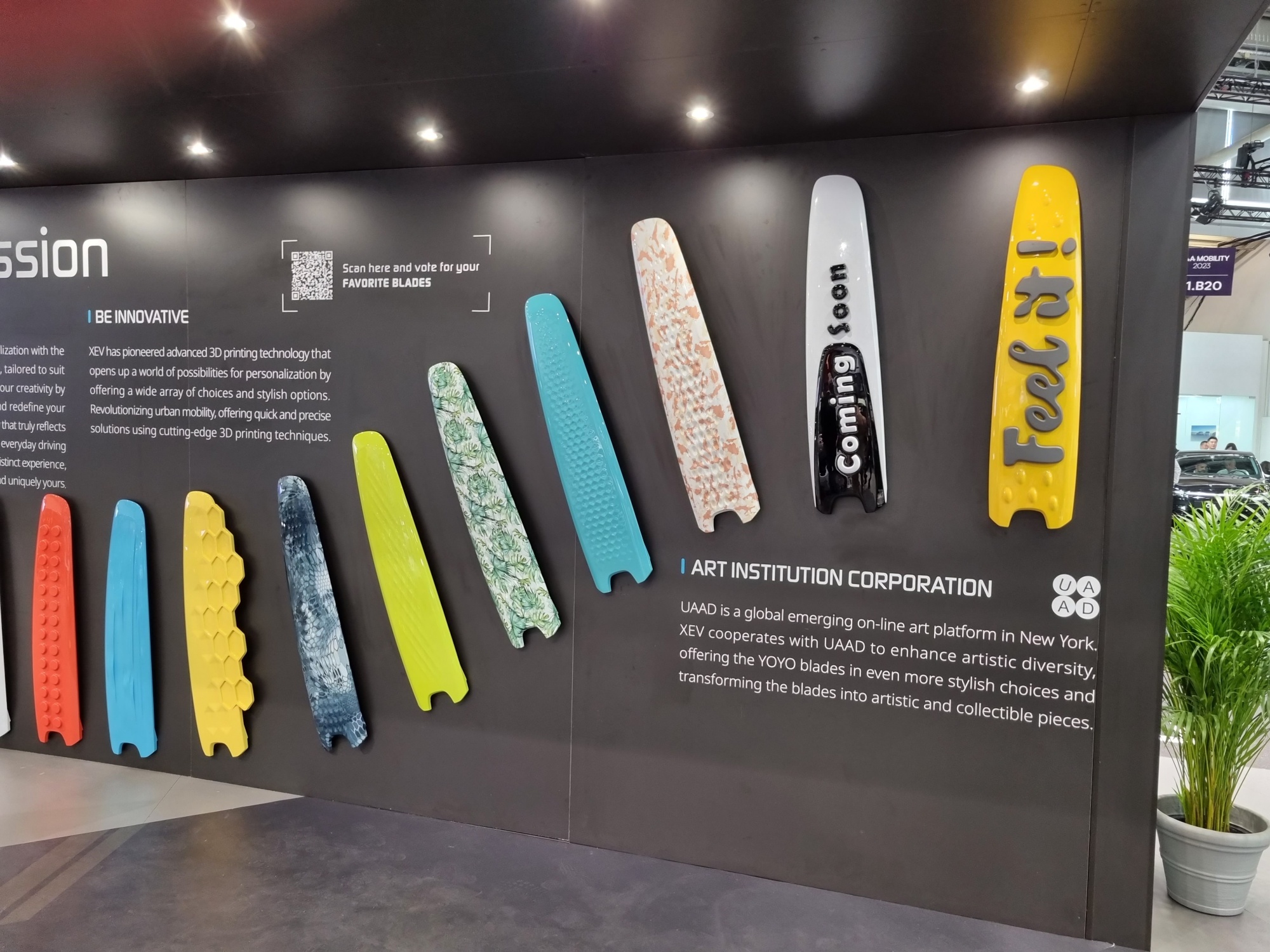XEV is an Italian startup that has designed the real urban runaround. It is a lightweight electric two-seater.
It is perfect for city driving at up to 50 km/h (31 mph). Accelerating to 60 km/h (37 mph) is possible, but not sporty. For visiting the countryside, the country roads outside the city limits, there is a “Sporty” mode that allows speeds up to 80 km/h (50 mph). It is only sporty, though, as if you are comparing a turtle to a snail.
Do not think about highways, not even those with a 55 mph (90 km/h) speed limit. The power is just not there. But city driving in cramped European cities, or lazily cruising through endless American suburbs — for that kind of driving, it is perfect.
The functionality is minimalistic, but complete. There is heating, cooling, and a Bluetooth connection with your smartphone for music and control through the app, mirroring your smartphone on the 10.25” touchscreen.
XEV center touchscreen
Basic safety features are present: pedestrian warning, brake force control, hill-start assist, and light single- pedal driving.
At the IAA Mobility Summit in Munich, Bayern (DE), XEV offered a 15-minute test drive, which is just enough to experience the usability of the vehicle. The model is what the many small 2-seat city cars are intending to be. But they were either too underpowered to avoid the need for a driver’s license, or too high spec’ed trying to offer the highway performance of a complete real car. The first suffered from usability in traffic, and the latter were too expensive.
This Italian entrance into the segment is expensive compared to what it offers in functionality. But the main sales argument is the styling and personal expression it enables. The 3D-printed side panels made to specifications enable a high touch of personalization, or branding.

XEV 3D printed side panels
It combines Italian flair with un-Italian engineering and production quality. It could have benefited from a higher power-to-mass ratio, but not as high as the Renault Twizzy has. The Twizzy drives more like a 4-wheel bike than a car, and it scares many prospects.

XEV: Two sides, same car. Who said both sides should look the same?
What makes the XEV stand out, besides the colorful side panels, is the battery swap system. The battery is divided in three modules that can be separately swapped. The intention is to build first dozens and later thousands of swapping stations. If needed, I could swap the battery. And with my body being long past its prime, that is a great accomplishment of the designers.

XEV battery bay

XEV battery swapping storage and charging console
Swapping stations look just like vending machines in the front of a shop. Most will have an attendant to help with the swap. Swapping is a 3-minute job, but normal charging is also possible.
For the rollout of this car, the geographical unit of entrance is not a country, but a city. The chicken and egg problem with the sales demand and lack of charging stations is very local. The ability to swap the battery makes this microcar so much more attractive, but it is usable without a network of charging stations.
With the current trend to bring the speed limit for entire cities down to 30 km/h (20 mph), this type of vehicle will become a lot more popular. I would love to test it in an inner-city like Amsterdam, Brussels, or Paris.

XEV info board

XEV inside door

XEV inside view passenger seat

XEV interior view

XEV rear view with open battery bay

XEV front view

XEV sun roof

XEV side mirror controls

XEV driver’s view of steering wheel and controls

XEV center controls
Have a tip for CleanTechnica? Want to advertise? Want to suggest a guest for our CleanTech Talk podcast? Contact us here.
EV Obsession Daily!
https://www.youtube.com/watch?v=videoseries
I don’t like paywalls. You don’t like paywalls. Who likes paywalls? Here at CleanTechnica, we implemented a limited paywall for a while, but it always felt wrong — and it was always tough to decide what we should put behind there. In theory, your most exclusive and best content goes behind a paywall. But then fewer people read it!! So, we’ve decided to completely nix paywalls here at CleanTechnica. But…
Thank you!
Tesla Sales in 2023, 2024, and 2030
CleanTechnica uses affiliate links. See our policy here.
Read the full article here


